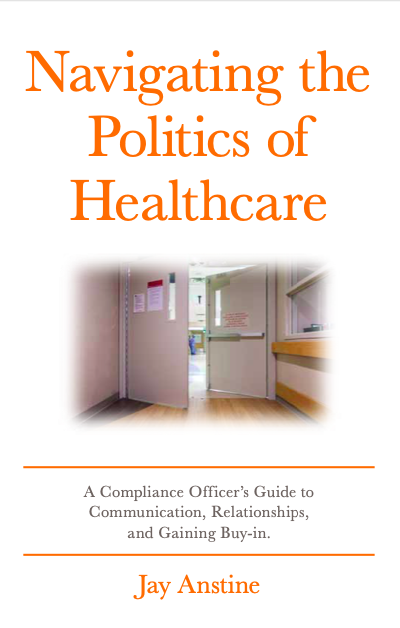The work of a compliance officer constantly challenges your ability to remain professional. When you consider the organizational risk involved in our work, combined with the politics of healthcare, you have a recipe for frustration, stress, and anxiety. For that reason, professional communication strategies can help you build stronger relationships with your healthcare leaders. This week, I wanted to focus on one of those strategies: delivering bad news—a common reality associated with our profession.
Defining “Bad News”
Before discussing a communication strategy, we need to first define “bad news”, because I’ll admit, that’s a vague term. Let’s assume you were working on resolving an identified billing and coding issue for a high dollar surgical procedure. You have conducted an investigation and determined the organization does not have documentation to substantiate medical necessity as required by CMS. In addition to addressing process changes to correct the issue going forward, you have identified a six-figure refund that must be paid back to Medicare. Given the financial impact to the organization, it is likely your leadership team, will not be too thrilled to hear this news. Additionally, let’s assume that through the investigation, it has become clear the issue could have been prevented if the one of the leaders had held a direct report more accountable. So you have the potential for a leader to take your news personally too. Awesome.
Developing a Communication Strategy
So, how would you go about approaching your discussion with the leadership team? If it were me, I would spend some time thinking about a strategy. As part of my thought process, I would make sure I have identified a communication plan around two topics:
1. How will I mentally prepare the leaders to hear the news?
2. What is my recommended solution to resolve the issue and prevent a future occurrence?
Let’s take a deeper dive into both these questions.
How will I mentally prepare the leaders to hear the news?
The first question is really aimed at softening the blow of the news you’re about to deliver. It’s no surprise that as humans we tend to have a fight or flight response when confronted with shocking news. Just think about times when you found out about a catastrophic news event. The same shock factor can apply to a healthcare leader when confronted with news of a large overpayment, an employee suspected of drug diversion, or an employee committing fraud.
If you are working on an issue that has such a shock factor, then you need to prepare for that response. Think about being in that person’s shoes and how you would appreciate hearing the information. For example, it may be best to allow the person to hear the information, process it, and then come back at a later time to discuss the topic. This approach can help ensure he or she is engaged in the discussion (and not distracted by the shock). It can also improve your chances of a more effective discussion about next steps.
You may also need to think about whether or not the leader will take the information defensively and if you can do anything counteract that defensiveness. For example, it may be helpful to lead the discussion with things the leader has done well before delivering the bad news. If multiple contributing factors were involved, you can also highlight those factors so the person doesn’t take full ownership. Every situation will be fact-specific, but these approaches may help to mentally prepare the leader to hear the news you’re about to deliver.
What is my recommended solution to resolve the issue and prevent a future occurrence?
The second question is about thoroughly thinking through the discussion. For example, giving thought to other communication strategies, such as anticipating questions, asking yourself “so what do you need from me,” and bringing a solution when you bring a problem. These are all questions you can walk through for responding to this second question and developing your overall strategy for delivering bad news to your healthcare leaders.
Pulling it All Together
Maintaining professionalism is critical to your success as a compliance officer because you need others in the organization to feel comfortable with you and trust you if you expect them to report concerns to you.
If you plan ahead for how you are delivering bad news, it will improve your chances for success because you’re taking a professional approach to an unpleasant conversation. In the short term, developing a strategy can help position you for a smoother conversation. In the long term, it will support your ability to build stronger relationships with your leaders and effectively navigate the politics of healthcare.
_____________________________________________________________________________




















